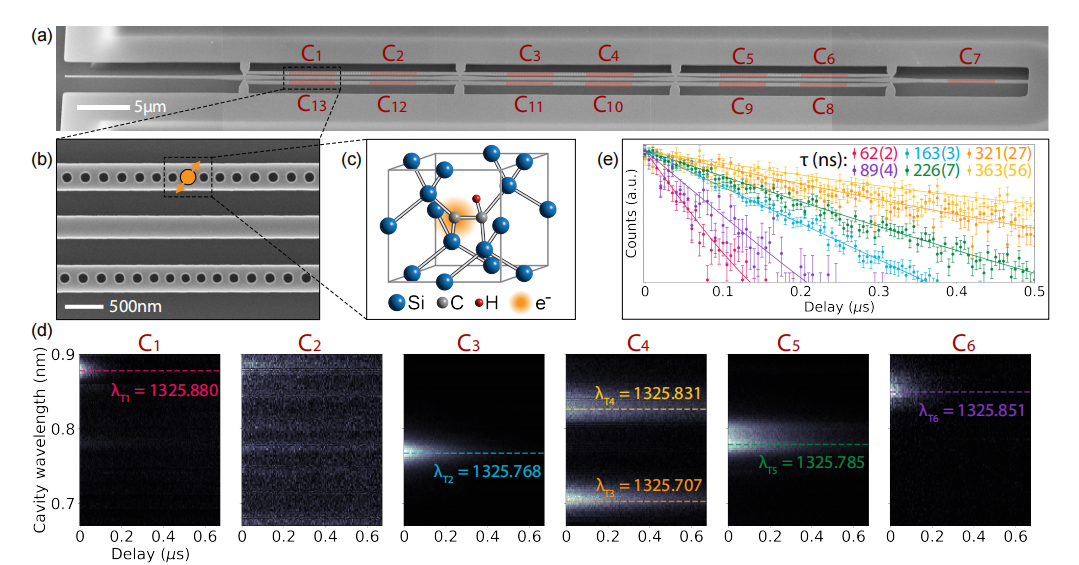
The article discusses the development of a silicon photonics platform designed for multiplexed single-photon generation using T centers in photonic crystal cavities. This platform leverages bus-coupled cavity arrays to enhance the efficiency of spin-photon interfaces, essential for applications like quantum networking and modular quantum processors.
Key Points:
Multiplexed Operation of T Centers: The authors demonstrate the operation of two spatially and spectrally distinct T centers in separate photonic crystal cavities that are coupled to a common bus waveguide. This design enables the simultaneous operation of multiple cavity-enhanced T centers, crucial for scalable quantum systems.
Cavity Enhancement and Tuning: The cavities are tuned by manipulating the refractive index, achieved through nitrogen deposition and selective removal. This selective tuning process allows for precise alignment of cavities with T centers, enhancing their fluorescence lifetimes (Purcell enhancement). The tuning results in improved cavity coupling and emission characteristics, which are essential for quantum applications.
Single-Photon Emission: The system achieves high-quality single-photon emission from T centers, verified through time-resolved fluorescence measurements and g(2) correlation functions. The observed values of g(2)(0) for both centers confirm the single-photon nature of the emission, a critical feature for quantum communication protocols.
Hybridized Modes and Entanglement: The study further explores the hybridization of cavity modes mediated by the bus waveguide. This interaction enables enhanced coupling between cavities, facilitating the generation of entanglement across distant cavities. The hybridized modes show distinctive decay rates, demonstrating the potential for strong coupling and entanglement generation in a multiplexed system.
Device Fabrication and Characterization: The T centers are created in silicon through ion implantation and rapid thermal annealing, followed by a photonic crystal cavity design to optimize interaction with the T centers. The fabrication process uses advanced lithography to form the necessary structures, ensuring high precision and yield.
Challenges and Future Work: The article discusses limitations related to spectral crowding and cavity linewidths, which can hinder the operation of multiple T centers in parallel. Future improvements in cavity quality and linewidth control are necessary to scale up the platform and increase the number of operable T centers. The authors also suggest that using micro-electromechanical actuators for strain tuning could further increase multiplexing capabilities.
Conclusion: This work highlights the potential of using silicon photonics and T centers for scalable, multiplexed quantum systems. The demonstrated ability to control cavity tuning and the generation of single photons from multiple T centers provides a solid foundation for quantum communication and entanglement distribution, with promising avenues for further improvements in scalability and performance.
OMeda (Shanghai Omedasemi Co.,Ltd) was founded in 2021 by 3 doctors with more than 10 years of experience in nanpfabrication. It currently has 15 employees and has rich experience in nanofabrication (coating, lithography, etching, two-photon printing, bonding) and other processes. We support nanofabrication of 4/6/8-inch wafers.